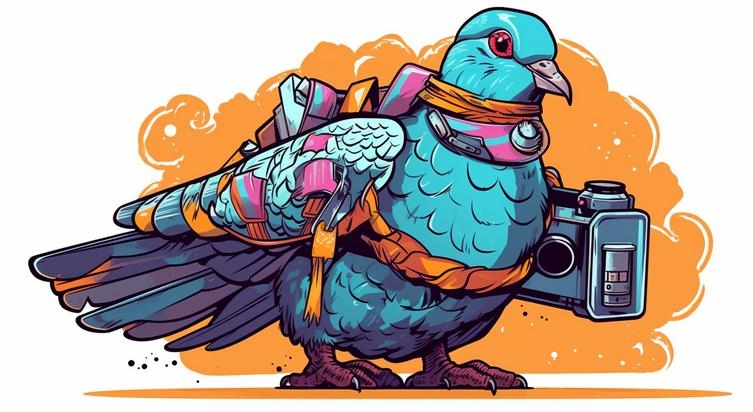Aerial Photography Before Drones: Pigeons and Kites

When Pigeons Were the Pioneers of Aerial PhotographyLong before the invasion of buzzing drones in the skies, there was a time when pigeons donned the role of aerial photographers. That's right, folks. Trust me when I say that the birds that now plague your city streets, leaving a trail of white waste and a cacophony of coos in their wake, were once the proud pioneers of aerial photography. And no, I'm not making this up.
In the early 1900s, the Swiss pharmacist and inventor Julius Neubronner came up with the ingenious idea of using homing pigeons to deliver medications to patients who lived in remote areas. But Julius didn't stop there. He proceeded to strap a tiny camera to the pigeon's breast, thus creating the world's first pigeon photographers. The resulting aerial photographs were so impressive that they caught the attention of the German military, who briefly considered using the pigeon-spy technology during World War I.
Practical Advice: Pigeon Aerial Photography in the Modern EraThough the future of pigeon photography may have been overshadowed by the seemingly unstoppable rise of the drone, there's no reason why you can't put your local pigeon population to work. So, allow me to provide you with some practical advice on how to turn your average, city-dwelling pigeon into a highly skilled aerial photographer.
- Choose the Right Pigeon: Not all pigeons are created equal. Look for a pigeon with strong wings and a determined gaze. This is the pigeon that will carry your camera to great heights and capture stunning aerial shots.
- Train Your Pigeon: It's essential to train your pigeon to return to you after it has taken its aerial photographs. This can be achieved by rewarding the pigeon with food when it comes back to you. Be persistent and patient, for you are molding the next generation of aerial photographers.
- Get a Lightweight Camera: Your average pigeon can't carry a hefty DSLR camera. Invest in a small, lightweight camera to ensure the pigeon's safety and the quality of your photographs.
- Test the Setup: Before sending your pigeon off on its first mission, it's crucial to test the setup. Ensure the camera is securely attached and that the pigeon can fly without any issues. The last thing you want is a pigeon plummeting from the sky due to camera-related complications.
- Choose the Right Location: A crowded city may not be the best place to test your pigeon's aerial photography skills. Opt for an open area with minimal obstacles and distractions.
When Kites Reached New Heights: The History of Kite Aerial PhotographyNow, if you're not too keen on entrusting your aerial photography dreams to a pigeon, fear not, for there's another pre-drone method that reached great heights: kite aerial photography. This method dates back to the late 1800s when the British meteorologist E.D. Archibald began attaching cameras to kites in order to capture photographs of the Earth from above.
This technique gained popularity among both professional and amateur photographers, who utilized various kite designs and camera setups to create stunning aerial images. In fact, kite aerial photography played a significant role during World War I, providing reconnaissance images of enemy trenches and positions. So, while drones may be the shiny new toy on the block, let's not forget the humble kite's historical significance in aerial photography.
Practical Advice: Kite Aerial Photography for the Modern AdventurerFeeling inspired to embark on your own kite aerial photography journey? Here's some practical advice to get you started:
- Choose the Right Kite: Ensure your kite is sturdy and able to withstand the weight of your camera. A delta or box kite is often recommended for their stability and lifting capabilities.
- Get a Lightweight Camera: Just like with pigeon photography, you'll need a lightweight camera that your kite can comfortably carry. A compact camera or even a smartphone can often provide excellent results.
- Create a Camera Rig: To attach your camera to the kite, you'll need a camera rig. There are various designs available, so find one that suits your needs and ensures your camera is secure and held at the right angle.
- Choose the Right Location and Conditions: To achieve the best results, consider factors such as wind speed, direction, and the location you're flying the kite. An open area with consistent wind is ideal for kite aerial photography.
- Practice, Practice, Practice: Kite aerial photography can be challenging, so don't expect perfect results right away. The more you practice, the better your images will become.
So, there you have it, the fascinating history and practical advice for aerial photography before drones. Whether you decide to enlist the help of a pigeon or launch a kite into the skies, remember that aerial photography is more than just a fancy gadget; it's an art form with a rich and diverse history.
| |






